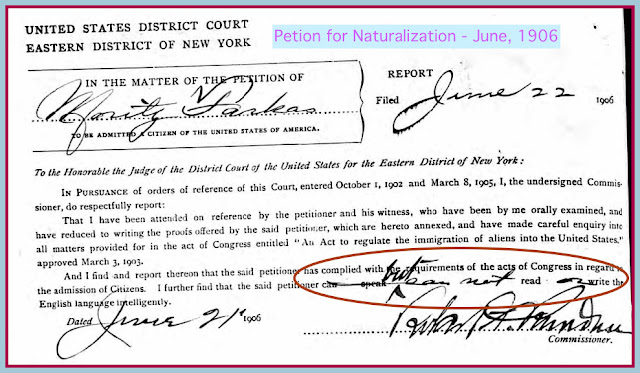Learning about the UK Census
This week I read Emma Jolly's excellent, detailed Guide to Tracing Your Family History Using the Census. The 2020 edition is updated from her earlier book, and explores the specifics and context of Census documents from England, Wales, Ireland, and Scotland. This guide gave me a better appreciation of who and what I might actually find in the Census records.
Emma's book goes beyond the actual Census questions to explain why various questions were added or changed every ten years, and what to be aware of when interpreting answers. Because I'm a Bronx native, her summary of historical context was especially helpful for understanding the background and evolution of UK Census documentation from early days to the 20th century.
Just as important, Emma decoded the marks delineating separate households and separate dwellings, which I had not paid close attention to when I originally looked at these Census documents. I know the little clues to check on US Census documents (such as the X in a circle in the 1940 US Census, showing which household member spoke with the enumerator) but I'm far less familiar with Census documents from elsewhere.
Check those little marks
With Emma's guide in mind, I revisited the 1871 Census of England page for Sarah Harris Slatter Shuttleworth (1814-1872), hubby's great-great grandmother, and her second husband, John Shuttleworth (1812-1878). The transcribed record shows three names of grandchildren in the household, but I *always* try to look at the actual image if available.
As shown directly above, John and Sarah were enumerated at the bottom of a Census page, with only two grandkids listed. I've circled in red the double diagonal lines that indicate the end of a dwelling, just above John's name. Notice there's no mark after the second grandchild, who's the last name on the page.
At the top of the next page is the third grandkid, and near her name, a single diagonal line--end of a household, not end of a dwelling. Three more names are listed in a separate household at same dwelling, then a double diagonal line--end of that dwelling.
Small marks but meaningful, because not seeing the end of a household was a reminder to check the next Census page for the remaining grandchild who was actually listed on the transcribed record. Folks who regularly search these UK Census documents are, I'm sure, very aware of these small marks, but I'm still getting comfortable with the context and nuances of genealogy documents from across the pond.
Note: Shuttleworth became a middle name for a few boys born in later generations. Seems to me that the grandchildren wanted to honor their step-grandfather by perpetuating his surname. He must have been a positive influence!








































